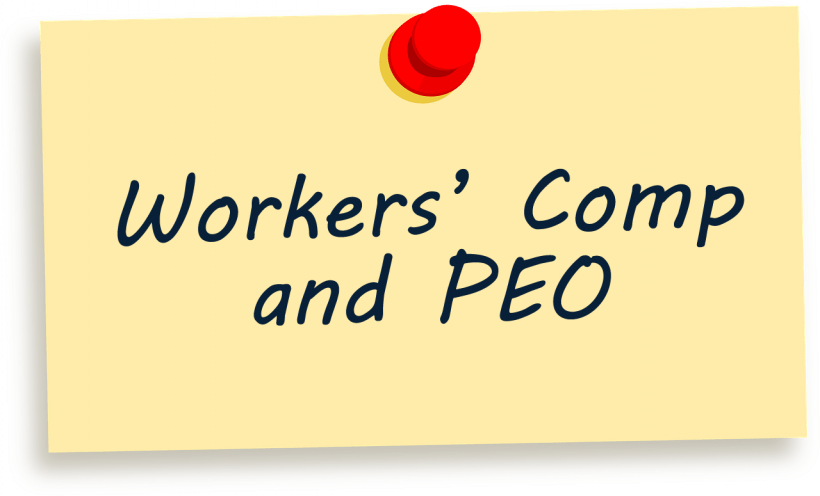or as this author would title it, “Another misguided effort to prove those that should have known better to be in the right and those that should have been protected to be in the wrong…”
The link below is to a study done in August of 2015 by
By James R. Jones CPCU, AIC, ARM, AIS
Executive Director, Katie School of Insurance & Financial Services at Illinois State University
PEO Large deductible study Aug 25
The white paper specifically discusses:
The Role of Large Deductible Policies for PEOs in the Failures of Small Workers’ Compensation Insurers
non-white paper language in “quotations” … “I have only copy/pasted part of the white paper and urge you to review it in your entirety…”
Background of this Study – Page 4
Following a series of workers’ compensation insurer insolvencies related to large deductible plans, the National Conference of Insurance Guaranty Funds (NCIGF)—a non-profit, member-funded association that provides national assistance and support to the property and casualty guaranty funds located in each of the 50 states and the District of Columbia—saw a need for further study of the issue examining the underlying causes of these insolvencies. The NCIGF provided technical assistance and support for this study.
…”totally appreciate that the NCIGF gets “stuck with the tab” for insurer insolvencies. At the same time, also understand the frustration that they have no ability to legislate change that could be potentially impactful to this issue which is the role of the regulators.
The following factors (especially in combination) have been identified as having the potential to cause these workers compensation insurer insolvencies:
- Inadequate collateral posted by the employer using large deductible policies; governed by the State Departments of Insurance…
- Employers that control the claims handling for injured workers through Third Party Administrators where the insurer has limited access to claims information; this is only allowed if the insurer allows it… again governed by the State Departments of Insurance…
- Cross-ownership of PEO employers and insurance companies used to provide workers’ compensation to the PEO. governed by the State Departments of Insurance…
- Pursuit of aggressive growth strategies by insurers through MGAs and PEOs. governed by the State Departments of Insurance…The ability to provide and ongoing manage the solvency, operations and ethics of an insuring entity is only governed by the State Departments of Insurance.
“This section is absolutely inaccurate”…
Special Considerations for PEOs and Large Deductible Policies – Page 7
A professional employer organization (PEO) is a firm that provides a service under which an employer can outsource employee management tasks such as employee benefits, payroll and workers’ compensation, recruiting, risk/safety management, and training and development. The PEO hires a client company’s employees, thus becoming their employer of record for tax purposes and insurance purposes. The client then pays a fee for this service and “borrows” back its employees.
…there is no transfer of labor never mind “borrowing” in the coemployment model. What is referenced above is a model known as “staffing” or payrolling” which is oft-confused with the coemployment model. Coemployment equals two employers sharing emploument responsibilities versus the model described which is that of a sole employer (staffing company)
…why? so many more that do not involve PEO? Someone to blame for lack of proper financial regulation?
In addition to solvency issues related to these abusive practices of providing illusory coverage, regulators should consider that a number of consumer protection laws governing insurance sales and marketing may also be violated as the PEO may obscure premium rates as the amounts paid to PEOs by client companies are fees, in lieu of insurance premiums.
“…really? I know of no other industry sector more heavily regulated.
NCCI and PEO’s – Page11
The latest study by their chief economist, Harry Shuford, specifically set out to address some of the negative assertions made against PEOs. In one conference presentation, he stated that getting rid of the tarnished reputation of PEOs was similar to “getting chewing gum out of your hair.” However, despite the reputational issue, many of his findings showed the favorable value of PEOs in the workers’ compensation system. He urged the industry and regulators not to just speculate about PEOs but to investigate.
“The irony behind these NCCI studies were that they were also commissioned by parties that were not “friends of PEO” and the studies ended up doing just the opposite of what was hoped. The PEO model equaled or out-performed the traditional workers’ compensation delivery model on all fronts. This reality leads to lower costs to consumers and insurers alike
Actuarial science “investigates” versus “speculates” and as a result, Instead of proving out things like fraudulent behavior by PEO’s, the NCCI studies (3) proved out that the PEO business model performs as well if not better then the traditional model.”
“Empirical evidence is catching up with the venom of the naysayers.
All three NCCI reports done by Mr. Schuford can also be found on the Compass for review and affirmation that with PEO, “Before you speculate, Investigate”.
-PRH
Join the Conversation on Linkedin | About PEO Compass
The PEO Compass is a friendly convergence of professionals and friends in the PEO industry sharing insights, ideas and intelligence to make us all better.
All writers specialize in Professional Employer Organization (PEO) business services such as Workers Compensation, Mergers & Acquisitions, Data Management, Employment Practices Liability (EPLI), Cyber Liability Insurance, Health Insurance, Occupational Accident Insurance, Business Insurance, Client Company, Casualty Insurance, Disability Insurance and more.
To contact a PEO expert, please visit Libertate Insurance Services, LLC and RiskMD.
